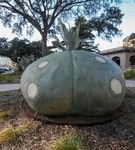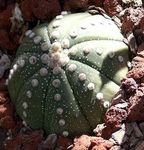Najo Jām (Our Home) At Comanche Lookout Park - Get ...
←
→
Page content transcription
If your browser does not render page correctly, please read the page content below
Najo Jām (Our Home)
At Comanche Lookout Park
Najo Jām (Our Home), 2020, by collaborating San Antonio artists Carlos Cortés and Doroteo Garza, is a
public artwork for Comanche Lookout Park that is pan-Indian—relating to the multiple indigenous tribes that lay
claim to this land. The title Najo Jām translates to "our home" in the Coahuiltecan language Pajalate, paying tribute
to our ancestors and future generations. This artwork is comprised of three stylized and aesthetic benches, a
monument, and two oversized planters. The benches, monument, and one of the planters are located at Comanche
Lookout Park. The other planter is currently on display at the River Walk Public Art Garden, located in Downtown
San Antonio. The artwork is made from reinforced concrete to look like stone and wood. This technique is called
trabajo rustico or faux bois, giving the artwork a natural and organic form, along with contributing to its aged
appearance as if the pieces were placed from the far-off past. Representative of a welcoming space, the site invites
interaction and respite after a long hike through Comanche Lookout Park, with benches featuring etchings related
to Native American ceremony and religion.
The monument is comprised of faux stone featuring deer and half-moon
imagery along with a peyote stitch pattern design. The deer and half-moon are carved,
while the peyote stitch pattern is comprised
of tile—reminiscent of beadwork from
various tribes, including the South Western
and Plains Tribes. The peyote stitch is
significant to the Native American church and
Peyote Cactus often found on ceremonial instruments,
rattles, and attire used in sacrament. The artwork is representative of
peyotism, a significant part of indigenous religious ceremonies. According
to legend, where the deer steps, peyote cacti grow. Native plants are Najo Jām (monument), 2020. Collection of City
of San Antonio.
planted in the various carved pockets in the monument including
lechuguilla, yucca, various species of cacti, and yarrow—known for its medicinal uses. For Najo Jām (Our Home), the
plants selected for various artwork components were intentionally selected by the artists. Some are native to the
area and many for their cultural significance.
Najo Jām blends several symbols and cultures truly creating a
piece that honors the many different peoples who have and continue to call
San Antonio home. Many Coahuiltecans are thought to have assimilated to
the Catholic Church and the Missions. However, even those who joined the
Church maintained a connection with the pre-Columbian tradition of
peyotism. Frescos at Mission Concepcion show the blending of Christian
Roy Winkelman, Fresco in the Mission and indigenous symbolism. i One fresco is thought to be a symbolic
Concepcion Baptistry, 2013. Florida Center for
Instructional Technology. representation of peyote. In addition to the Pan-Indian narrative the project
Prepared by Doroteo Gaza, Artist & Jordyn Patrias, Public Art Project Manager 1Najo Jām (Our Home)
At Comanche Lookout Park
conveys, there is also a blending of artistic style. The use of trabajo rustico or faux bois are typically associated with
Latin America and France. Combining this technique with indigenous imagery creates a unique and aesthetic
juxtaposition.
Like the Coahuiltecans, peyotism and the Native American Church played a
large role to the Comanche. While, the use of ceremonial peyote use had been around
for thousands of years, the sacramental use in and founding of the Native American
Church began around the 1880s for South Western Plains tribes. ii It is thought that the
creation and spread of the religious practice had much to do with the suffering and
oppression stemming from forced assimilation on the reservations. iii One of the key
influential figures in disseminating the Native American Church was Quanah Parker, a
famed Chief of the Comanche. He was introduced to peyotism after being treated from
a grave wound by the Coahuiltecans. iv Not only did Quanah Parker help spread the
religion—he brought forth the Half Moon Ceremony. v The Ceremony uses the half-
moon alter—as depicted in the monument.
Comanche Chief Quanah Parker
Other important religious symbols represented in the artwork include the deer
and half-moon, large spiritual components in the lives of south Texas and northern Mexico indigenous people.
Specifically, representing ceremonial alters where peyote ceremonies would take place, the half-moon seen in the
deer is a sacred image important to the Native American Church. The blue color scheme of the deer is culturally
significant to indigenous peoples in northern Mexico. The stars on the deer represent the Pleiades, an important
star cluster in numerous ceremonies. These etchings take inspiration from pictographs and petroglyphs, forms of
ancient rock art that is painted or carved into stone. Deer marrow was used to create these paintings, furthering the
sacred relationship to the animal. vi The deer is known to be an important food source. Deer were important to the
past and remain important today—thus bridging the past and future.
Deer Petroglyph at Agua Fria National Monument in Arizona. Bureau of Najo Jām (side bench), 2020. Collection of City of San Antonio.
Land Management.
Prepared by Doroteo Gaza, Artist & Jordyn Patrias, Public Art Project Manager 2Najo Jām (Our Home)
At Comanche Lookout Park
The two side benches are a faux bois (fake wood) and faux stone slab hybrid. The back rest appears to be
comprised of stone while the seat mimics the appearance of wood. The pieces look organic and aged as if they were
placed together in the far-off past. Featuring various patterns, the inside back rest presents the peyote stitch pattern.
The central bench is a faux stone construction. The bench has seating on both sides
and features a distinct design on each side. The inner side has a carved peyote button
placed on top the peyote stitch. The back of the bench also features the peyote stitch
and a pattern inspired by the morning star drum tie. Carrying an ancestral memory,
the drum and songs are important symbols loaded with lore and significance. Passed
on generation to generation, the songs are often comprised of vocals with an
occasional phrase. Song remains important today, with younger generations
breathing new life into this historical tradition. In addition, there are carved deer hoof
prints on the seat, directly correlating to the peyote legend of the cacti growing from
Najo Jām (center bench), 2020.
where the deer steps. These etchings speak to the monument installed next to the Collection of City of San Antonio.
central bench and two planters.
One planter, located at Comanche Lookout Park, is designed with tiled banding.
The vessel is inspired by frequently traded historic
indigenous pottery. They were often comprised from a
simple shape and used to carry water. Both planters are
filled with site specific, native plants. The large tiled
planter has a sotol, also called a Prairie Candle, which
was traditionally used to light prayer smokes for the
peyote ritual. other planter references the shape of a
Najo Jām (peyote button planter),
peyote button. The planter will be on temporary display 2020. Collection of City of San Antonio.
Najo Jām (large planter),
2020. Collection of City of at the Garden as part of a rotating series of public art,
San Antonio.
before permanently moving to Comanche Lookout Park. This installation marks the first
temporary districtwide connectivity piece to debut at the River Walk Public Art Garden. The peyote button planter
features the vibrant and durable Mescal Agave.
This artwork, with use of symbolism creates a sense of welcoming and homecoming; along with honoring
history and culture and paying tribute to the land on which it is built.
The Department of Arts & Culture would like to give thanks to Tāp Pīlam Coahuiltecan Nation for their support of
this project. Special thanks to artist’s Carlos Cortés and Doroteo Garza for providing an in-depth explanation of the
symbolism used throughout this project. Much of this information was gathered through traditional stories and
song passed down to Garza. Thank you, also to Jesús “Jesse” Reyes Jr., whose anthropological background also
informed this project.
Prepared on January 12, 2021
Prepared by Doroteo Gaza, Artist & Jordyn Patrias, Public Art Project Manager 3Najo Jām (Our Home) At Comanche Lookout Park Project Plant list: Monument Lechuguilla—Agave Lechuguilla Yarrow—Achillea millefolium Stonecrops— Sedum crassulaceae Zebra Cactus—Haworthia attenuate Golden Barrel Cactus—Echinocactus grusonii Ghost Echeveria— Echeveria lilacina Red Yucca—Yucca hesperaloe Bicolor Sage—Salvia sinaloensis Mexican Oregano—Poliomintha longiflora Uvalde Spineless—Opuntia speciose Prickly Pear—Opuntia santarita Large planter Sotol—Dasyliron wheeleri Peyote Button planter Mescal Agave—Agave parryi iTracy L. Barnett, “San Antonio Missions Preserve Native American History,” Houston Chronicle, April 8, 2016, https://www.houstonchronicle.com/life/travel/weekend-getaways/article/San-Antonio-missions-preserve-Native-American- 7237657.php. ii Omer C. Steward, Peyote Religion: A History (Norman: University of Oklahoma Press, 1987), Xiii. iii William T. Hagan, Quanah Parker, Comanche Chief (Norman: University of Oklahoma Press,1993), 52-53. iv Steward, Peyote Religion: A History, 45-53. v Ibid, Xiii. John MacCormack, “Ancient Artwork Offers a Puzzling Picture of the Past,” San Antonio Express News, March 4, 2012, vi https://www.mysanantonio.com/news/local_news/article/Ancient-artwork-offers-a-puzzling-picture-of-past-3380300.php. Prepared by Doroteo Gaza, Artist & Jordyn Patrias, Public Art Project Manager 4
You can also read
























































